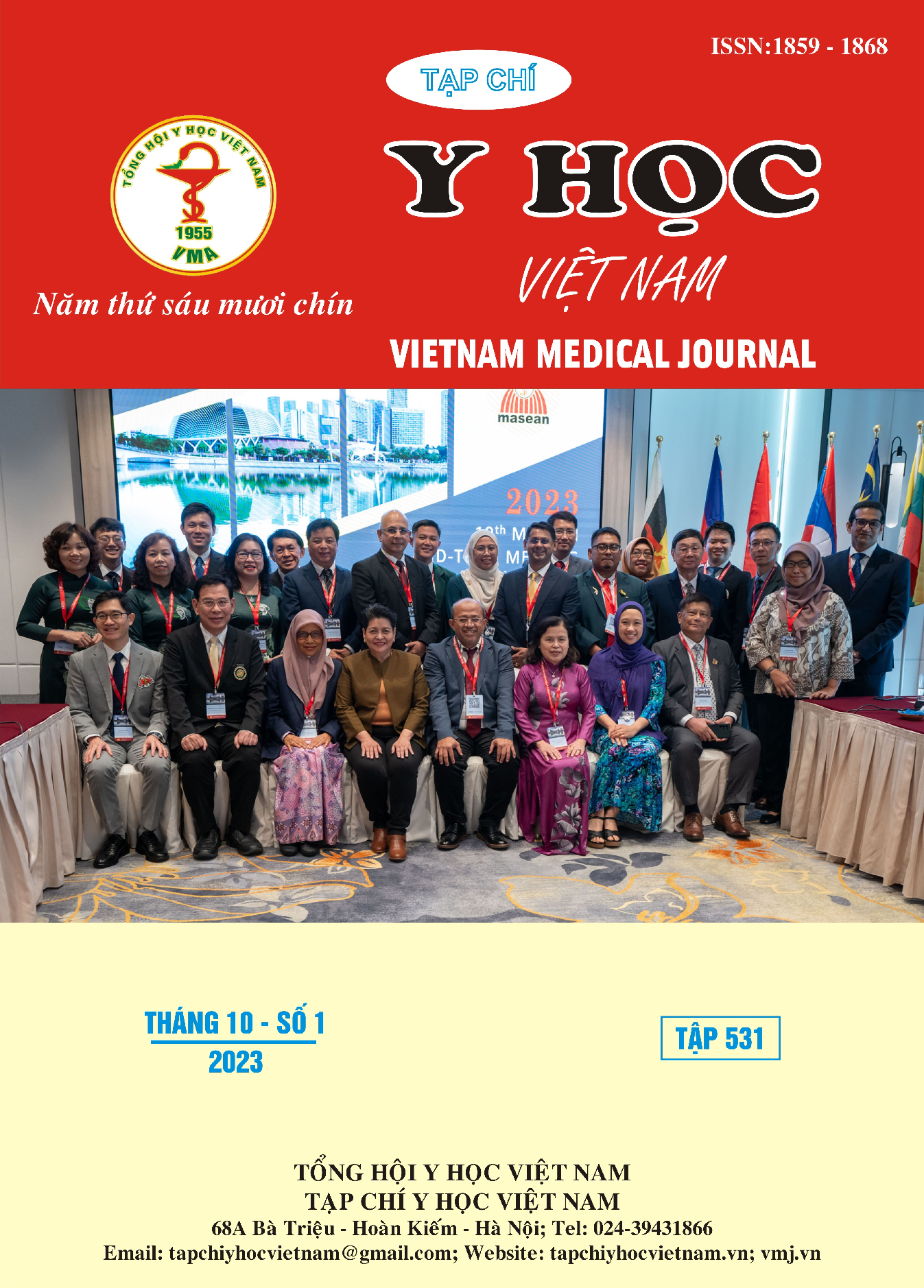OVERVIEW CLINICAL, PARACLINICAL CHARACTERISTICS OF ALLERGIC FUNGAL SINUSITIS
Main Article Content
Abstract
Objectives: Synthetic description of clinical and paraclinical characteristics of allergic fungal sinusitis. Subjects and methods: Scoping Review: articles, studies, lectures, textbooks at 3 databases Pubmed, Google Scholar, Sciencedirect met the research criteria. Result: Found 1012 documents. After analysis, 17 articles were included in the study: the study used a retrospective design of 58.8% (10), a prospective study of 41.1% (7) and the sample size of the studies was less than 50. people (100%). The average age of the participants was under 35 years old 64.7%, male/female ratio 1.24:1.Patients had symptoms of runny nose, stuffy nose, polyp 100% (157); smell disorder 38.2% (60), headache 18.4% (29); postnasal drip17.1% (27). On CT scan: 100% polyp (157). Increased density between uniform blurs 57.3% (57.3). Bone erosion 18.4% (29 and intracranial and orbital enlargement 15.9% (25) The rate of fungal examination on fresh examination is 25.4%, fungal culture (+) is 62.5%. Of which: Aspergillus 45.2% (71), Bipolaris 5.7% (9), Alternaria 5.7% (9) other fungi (Rhizomucor, Fusarium sp..) 5.7% (9). Blood eosinophils > 1 G/L is 39.5% and blood igE (whole and specific) > 600 UI/mL is 46.5% Skin test (+) with fungal allergens is found at a rate of 19, 7% Conclusion: Allergic fungal rhinosinusitis with nasal obstruction, rhinorrhea, and smell disturbance CT scan showed polyps, increased density between homogeneous opacities, and bone erosion. The most common pathogens are Aspergillus, followed by Bipolaris and Alternaria, other less common species often have elevated blood eosinophils and igE.
Article Details
Keywords
Allergic Fungal Sinusitis, Clinical Features, Histopathology, Microbiology
References
2. Morpeth JF, Rupp NT, Dolen WK, Bent JP, Kuhn FA. Fungal sinusitis: an update. Ann Allergy Asthma Immunol. 1996;76(2):128-139; quiz 139-140. doi:10.1016/S1081-1206(10)63411-4
3. Kaur R, Lavanya S, Khurana N, Gulati A, Dhakad MS. Allergic Fungal Rhinosinusitis: A Study in a Tertiary Care Hospital in India. Journal of Allergy. 2016;2016:1-6. doi:10.1155/2016/7698173
4. Thahim K, Jawaid MA, Marfani MS. PRESENTATION AND MANAGEMENT OF ALLERGIC FUNGAL SINUSITIS. 2007;17.
5. Al-Dousary SH. Allergic fungal sinusitis: radiological and microbiological features of 59 cases. Annals of Saudi Medicine. 2008;28(1):17. doi:10.5144/0256-4947.2008.17
6. Montone KT, Livolsi VA, Feldman MD, et al. Fungal Rhinosinusitis: A Retrospective Microbiologic and Pathologic Review of 400 Patients at a Single University Medical Center. International Journal of Otolaryngology. 2012;2012:e684835. doi:10.1155/2012/684835
7. Cody DT, Neel HB, Ferreiro JA, Roberts GD. Allergic Fungal Sinusitis: The Mayo Clinic Experience. The Laryngoscope. 1994; 104 (9): 1074???1079. doi:10.1288/00005537-199409000-00005


